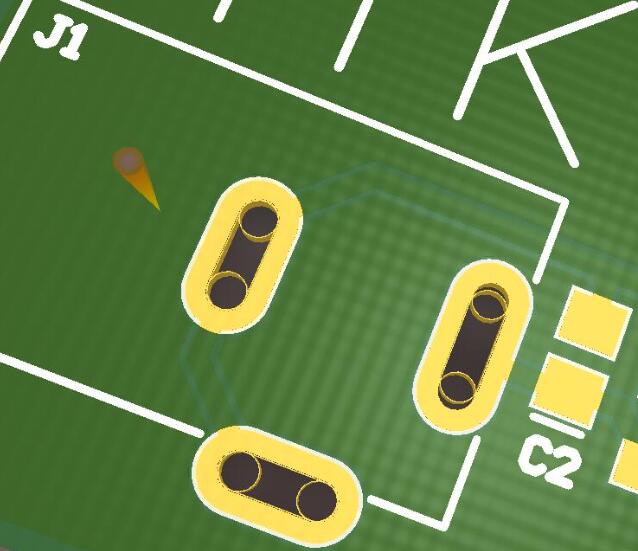Castellate holes, also known as plated half holes, are structures designed to resemble barriers on the edges of PCBs. They create ordinary plated holes and then run a sharp router drill on them, leaving half of the holes.

Castellated holes
As a convenient and efficient side conductor design, it often appears in signal circuits and is widely used for onboard connections. The edges of the holes can be directly welded to the motherboard to save connectors and space. For example, a Bluetooth or Wi-Fi module with a plated half hole, as a separate component, can be easily soldered to the motherboard to meet specific needs without the need for any wire connections, which are clean and easy to operate.
Why use castellated holes
By creating these holes on the edges of the circuit board, they can be used to replicate certain parts of the PCB circuit. For example, if there is a circuit that includes an inverter, filter, or feedback loop. These small subcircuits can be mass-produced, tested, and soldered onto the main PCB containing other parts of the circuit when needed.
What are castellated holes used for?
The most common use of castellated holes is for designers to create PCB modules, such as Wi-Fi or Bluetooth modules, and then place them as independent components on another board during the PCB assembly process. However, positioning is also used when combining two circuit boards to ensure that the solder inspection joint structure is reasonable and to create a wireless PCB-to-PCB link.
Advantages of castellated holes
1. Castellated PCBs can be used as branching boards for specific parts of larger PCBs.
2. These holes facilitate changing the pin layout of components according to user requirements.
3. Integrated modules can be produced on a single PCB board using casting, which can be further used for another assembly during the production process.
During the final production process, a PCB with castellated holes can be easily installed on another PCB.
5. They are used to combine two boards to verify the quality of solder joints.
6. They are used for distribution boards or small modules, such as Wi-Fi modules.
7. Slot holes also help create a wireless PCB-to-PCB link.
How to manufacture castellated holes PCB?
1) Determine the required slot hole size, with a width of X and a height of Y for the castellated hole
2) Provide PCB boards to be drilled
3) Drill holes on the PCB board to be drilled to form the first hole
4) The first hole on the upper dielectric layer is expanded for the first time through deep milling to form an initial groove hole. The width of the initial groove hole is X1, the height of the initial groove hole is Y and X1 5) Metallize the first hole and initial groove hole to form a metal layer on the hole wall, which is electrically connected to the inner circuit layer 6) According to the determined size, expand the initial groove hole for a second time through deep milling and form the required groove hole. The function of castellated holes The castellated holes on the PCB board have various functions: 1. Galvanic isolation: slots can create physical isolation on the PCB board to avoid mutual interference of electrical signals. By leaving some copper-free areas around the castellated holes, adjacent circuit components or signals can be electrically isolated. 2. Fixed parts: slot holes can be used to fix parts, such as electronic components or Machine elements. By installing screws or nuts in the castellated holes, these components can be securely fixed to the PCB board. 3. Ventilation: castellated holes can also be used for ventilation to help dissipate heat. On high-power circuits, heat dissipation is crucial as overheating may damage electronic components. 4. Grounding: castellated holes can also be used for grounding to help ensure circuit stability and reliability. By connecting the slot holes to the ground, noise in electrical signals can be eliminated and the impact of electromagnetic interference can be reduced. In summary, castellated holes are a very common and important element in PCB board design, which can be used for various purposes to help achieve circuit performance and reliability. We use castellated holes PCBs for various purposes. Typically, designers use them to produce printed circuit board modules. The models of these PCB modules include Bluetooth and WIFI modules. When connecting two boards, we also use serrated holes. The castellated holes make the wireless connection between circuit boards very good.